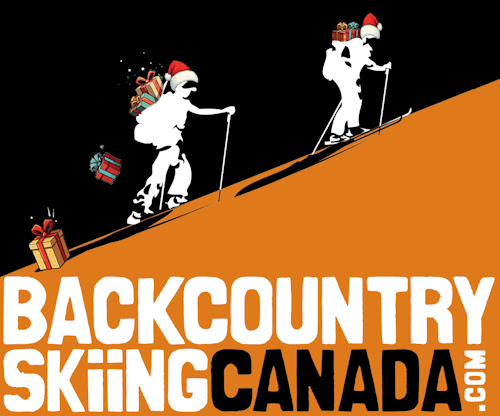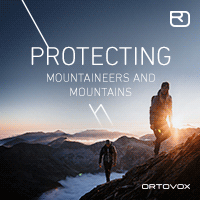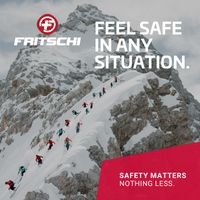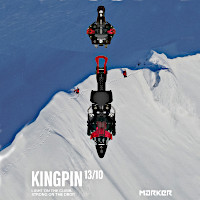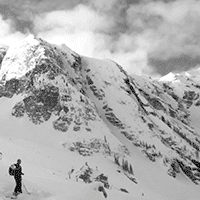CAC Avalanche conditions update
The CAC has published an avalanche conditions update for British Columbia. You can read it here:
http://www.avalanche.ca/cac/li.....date110315
Here is the text from their PDF report if you have troubles opening it:
Canadian Avalanche Centre - Public Avalanche Warning Service
Avalanche Conditions Update
March 15, 2011
At my house in Revelstoke we’ve lost 20cm of snow due to warm temperatures and rain over the last couple of days. Meanwhile in the Monashees just west of here, nearly 50cm of dry powder has fallen at treeline. It must be spring. And, while the snowpack is generally in good shape, especially compared to the last few seasons at this time, there are a couple of new challenges that have cropped up since my last update.
February 21st PWL: Aspect specific persistent slabs in the Columbia Mountains
A suncrust on southeast, south, and some southwest aspects with sugary faceted snow crystals and/or feathery surface hoar crystals on was buried on or about February 21st in many areas of the Columbia Mountains. This layer produced mostly small and medium sized avalanches (up to size 2) after about 40-60cm of new snow had accumulated on it. These avalanches were naturally triggered during snowfalls, spells of warm temperatures, or when skies cleared and when solar radiation warmed sunward slopes. There have also been at least two cycles of human triggered avalanches involving this layer, which is now considered a persistent weak layer (PWL). PWLs are layers that stay unstable for extended periods of time, from a couple of weeks to an entire season.
On March 6th, I remote triggered an avalanche on the Feb 21 PWL—I didn’t touch the slope on which it failed, just my riding by released a small slide about 65cm deep and 15m wide that ran nearly 30m before it stopped. While this particular event was not big enough to hurt anyone (there was no terrain trap on the slope) I clearly recall thinking that perhaps the February 21 layer was on the verge of becoming a bigger problem. Since March 6th we’ve seen continuing snowfalls and as of today, I estimate the February 21st PWL is 90 to 150cm below the surface. Yesterday afternoon, we received notice that skiers had remote triggered a size 3 avalanche (large enough to destroy your pickup) on this layer. The numbers: south aspect, 2000m elevation, depth 120cm, width 150m, and ran full path of 900 vertical meters breaking trees up to 15cm in diameter. Photos of the location show what looks like relatively benign terrain in sparse trees with a steep roll where the slide initiated.
I personally think this layer is now at a critical point: there is a significant load on it from all the snow we’ve had recently, temperatures are warm, and the snow above the layer has settled or been windblown into a cohesive, firm slab. The ingredients are right for a natural avalanche cycle (likely triggers are rain, more new snow, wind-loading, sun, or a smaller avalanche from slopes above). As indicated by the incident mentioned above, human triggering is likely: skiers and sledders who make an error in terrain choice could set off a significant avalanche. Sledders, take note that as the snow settles and conditions for climbing improve on sunny slopes, this layer will likely create increasingly large avalanches.
It remains to be seen if the February 21 PWL has legs—it might settle out fairly quickly (for a persistent weak layer that means another week or two) and might not be a big performer. But there’s enough uncertainty in my mind that when I go back into the mountains, I’ll be doing what all my colleagues have been doing for the last couple of weeks: avoiding the terrain where this layer is known to exist; riding on other aspects where conditions are just as good or better; and staying in places where there are lesser, more predictable, or no avalanche problems. I suspect this is why we’ve seen a decrease in human triggered avalanches on this layer in recent days: it’s not because the problem has gone away, in fact it’s probably more severe now than ever, but most people are keenly aware of the problem and have been avoiding terrain where it could be triggered.
January 18th PWL: Deep persistent slabs in southeast BC
In the southeast corner of BC, a rain crust with sugary faceted snow on top was buried on or about January 18th. This layer is similar to the February 21st suncrust with a couple of important differences. First, it’s on all aspects, which makes it harder to avoid. Second, it’s deeper (up to 300cms below the surface), which is a double edged sword: a layer that deep is hard to trigger but if you do trigger it, you’ll likely get a very large, destructive avalanche. The January 18th layer produced an avalanche cycle late last week that appeared localized to the Fernie/Lizard Range area but which produced numerous very large natural and explosive triggered avalanches. This layer prompted our March 11 Special Public Avalanche Warning for the southeast corner of BC that expires today.
I personally think this layer likely exists beyond the Fernie/Lizard Range. It’s likely not as deeply buried in surrounding areas (I’m thinking potentially farther north and maybe in the eastern part of the Kootenay-Boundary region) but I think it has potential to be naturally triggered by more snow, rapid temperature changes, strong sun, cornice falls, or smaller avalanches from above. I also worry that it’s triggerable by human activities. I feel sledders are especially vulnerable, partially because a rider and sled is much heavier than a skier but even more so if you get stuck, spin your track, and dig through the upper layers of the snowpack. A skier might trigger this layer in extreme terrain, complex terrain, or in places where the snowpack is variable in depth. I think this layer will become dormant in the next week or two. That is, while the problem will not go completely away, over time it will become increasingly difficult to trigger and the probability of an avalanche starting will become low. If triggered, however, the size of slides will be large.
Storm Snow and Wind Slabs: All Regions
We’ve been in an ongoing storm cycle in almost all regions for the last couple of weeks. This has created storm snow and windslab avalanches in many areas. While not trivial, these problems are shorter-lived and more predictable than PWLs. The weather forecast suggests we are moving into a calmer, less stormy period which, given a bit of time, will allow any weak layers that do exist to settle and bond.
November Facet/Crust PWL
If you have not already done so, please take a look the February 18th update, which you can find here:
http://www.avalanche.ca/cac/li.....date110218.
The November facet/crust layer has been more or less dormant for a couple of weeks now, but it’s still something to keep in mind with the arrival of as spring. Historically, this is when deep persistent weak layers wake up and reactivate. I’m not convinced this one will come back, but I’m not sure enough about that to poke this dragon’s tummy too hard just yet…
Risk Management
For the next couple of weeks my risk management strategy includes two primary tactics: a) choose terrain where PWLs do not exist and b) give recent storm snow and windslab avalanches time to settle and bond. Here’s my plan:
1. In all of the Columbia and Rocky Mountains: Where there is no evidence of recent avalanche activity, stay away from avalanche terrain on southeast, south, and southwest aspects. This includes runout zones in valley bottoms and all slopes steep enough to produce avalanches. If you’re unsure how steep that is, clinometers something like this: http://www.backcountryaccess.c......php?id=56 are available at most mountain shops. Anything over 30 degrees is suspect—to be safe, make it 25. And look at the whole slope, not just where you are; if there are steeper areas above, below, or around you, back off.
2. In the southeast corner of BC: Thoroughly research local snowpack conditions. Talk to knowledgeable locals, check avalanche forecasts, and ask professional practitioners in the area about the January 18th layer. If you are certain the January 18th rain crust did not form in the area you are riding, it’s not an issue. However, if you suspect or know this layer exists, and there’s no evidence of recent avalanche activity, my personal risk tolerance dictates avoiding all avalanche terrain, including runout zones in valley bottoms where this layer is a concern.
3. Everywhere in BC: Where storm slab avalanches are a problem, I’ll wait at least 36-48 hours after a storm ends before tackling larger, more complex terrain features. I’ll avoid aspects where wind has loaded snow onto slopes for a couple days more; in most cases windslabs require several days after they form, perhaps a week on the outside, before they settle and bond.
Learn More
While the current PWLs are somewhat different from what we experienced in the last few seasons, reading the following papers from previous years can help develop your knowledge:
http://www.avalanche.ca/cac/li.....Lpaper0708
http://www.avalanche.ca/cac/li.....Lpaper0910
In all cases, check avalanche forecasts for your region at: http://www.avalanche.ca/cac/bu.....ins/latest, thoroughly research local conditions, plan your trips carefully, and choose terrain that’s appropriate to the conditions. You can learn more about persistent slab, deep persistent slab, storm slab, and windslab problems in the Decision Making section of the CAC’s website: http://www.avalanche.ca/cac/pr.....sionmaking. Open the appropriate “Avalanche Problem Essentials” document from the list on the right hand side of the page. Feel free to forward or repost this document. I welcome comments, suggestions, and questions.
Karl Klassen - Public Avalanche Warning Service Manager
Canadian Avalanche Centre, Revelstoke BC
250-837-2141 ext. 227
